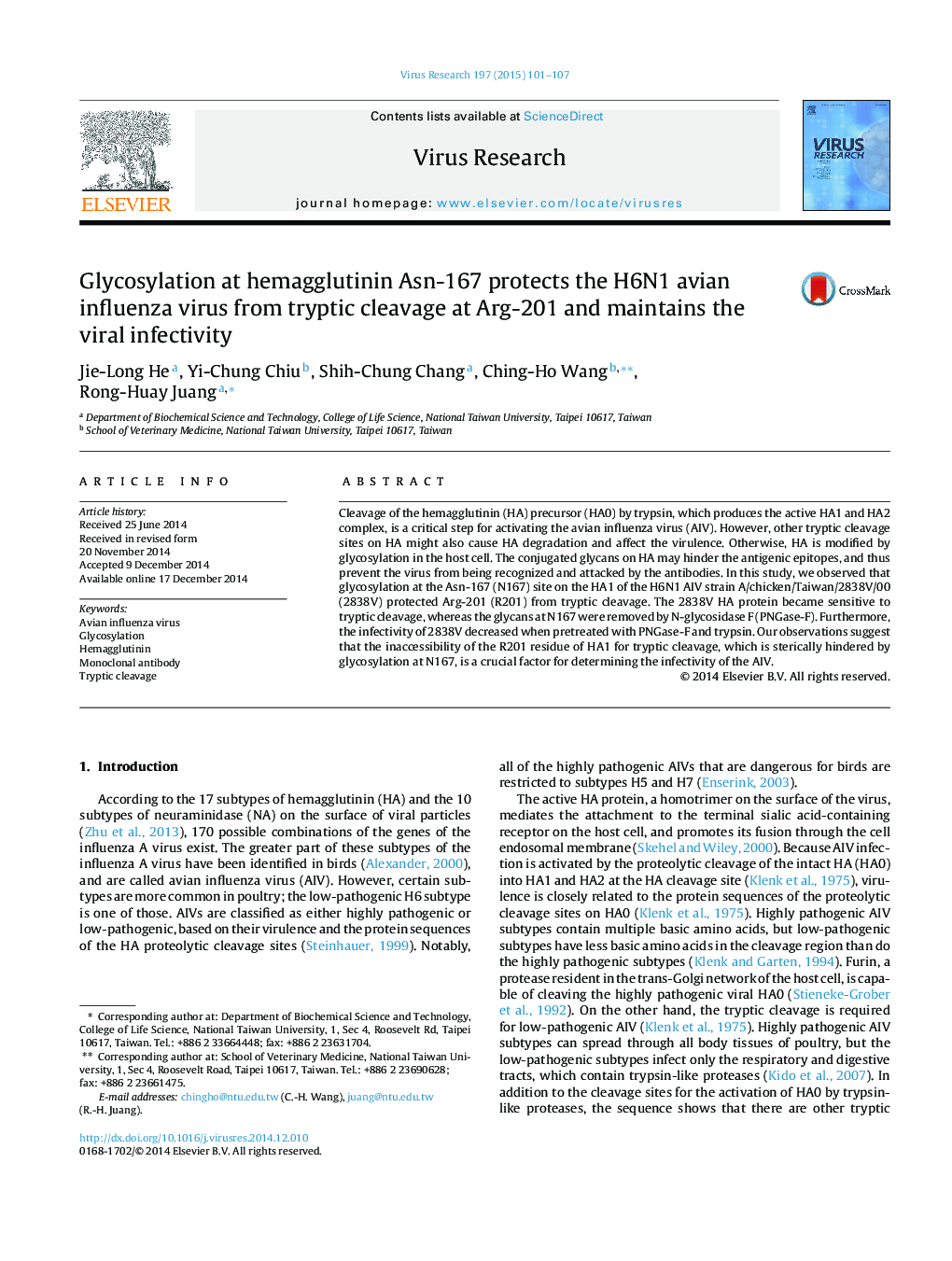| Article ID | Journal | Published Year | Pages | File Type |
|---|---|---|---|---|
| 3428305 | Virus Research | 2015 | 7 Pages |
•Glycosylation at Asn-167 on HA1 of 2838V protected Arg-201 from tryptic cleavage.•If glycans at Asn-167 removed, HA1 protein became sensitive to tryptic cleavage.•Infectivity of 2838V decreased as pretreated with deglycosylation and trypsin.•Arg-201 is sterically hindered by Asn-167 glycan; both are crucial for infectivity.
Cleavage of the hemagglutinin (HA) precursor (HA0) by trypsin, which produces the active HA1 and HA2 complex, is a critical step for activating the avian influenza virus (AIV). However, other tryptic cleavage sites on HA might also cause HA degradation and affect the virulence. Otherwise, HA is modified by glycosylation in the host cell. The conjugated glycans on HA may hinder the antigenic epitopes, and thus prevent the virus from being recognized and attacked by the antibodies. In this study, we observed that glycosylation at the Asn-167 (N167) site on the HA1 of the H6N1 AIV strain A/chicken/Taiwan/2838V/00 (2838V) protected Arg-201 (R201) from tryptic cleavage. The 2838V HA protein became sensitive to tryptic cleavage, whereas the glycans at N167 were removed by N-glycosidase F (PNGase-F). Furthermore, the infectivity of 2838V decreased when pretreated with PNGase-F and trypsin. Our observations suggest that the inaccessibility of the R201 residue of HA1 for tryptic cleavage, which is sterically hindered by glycosylation at N167, is a crucial factor for determining the infectivity of the AIV.
